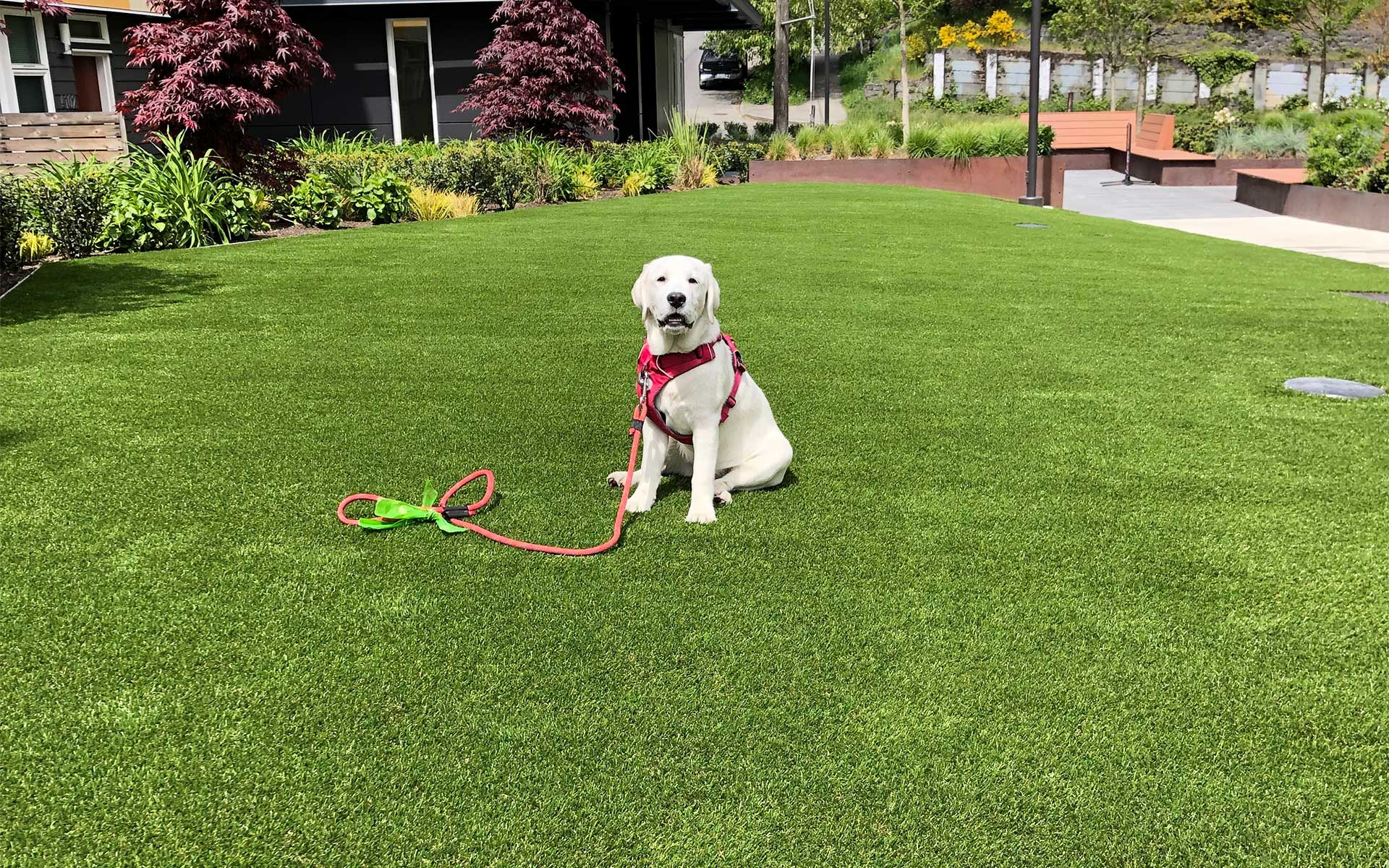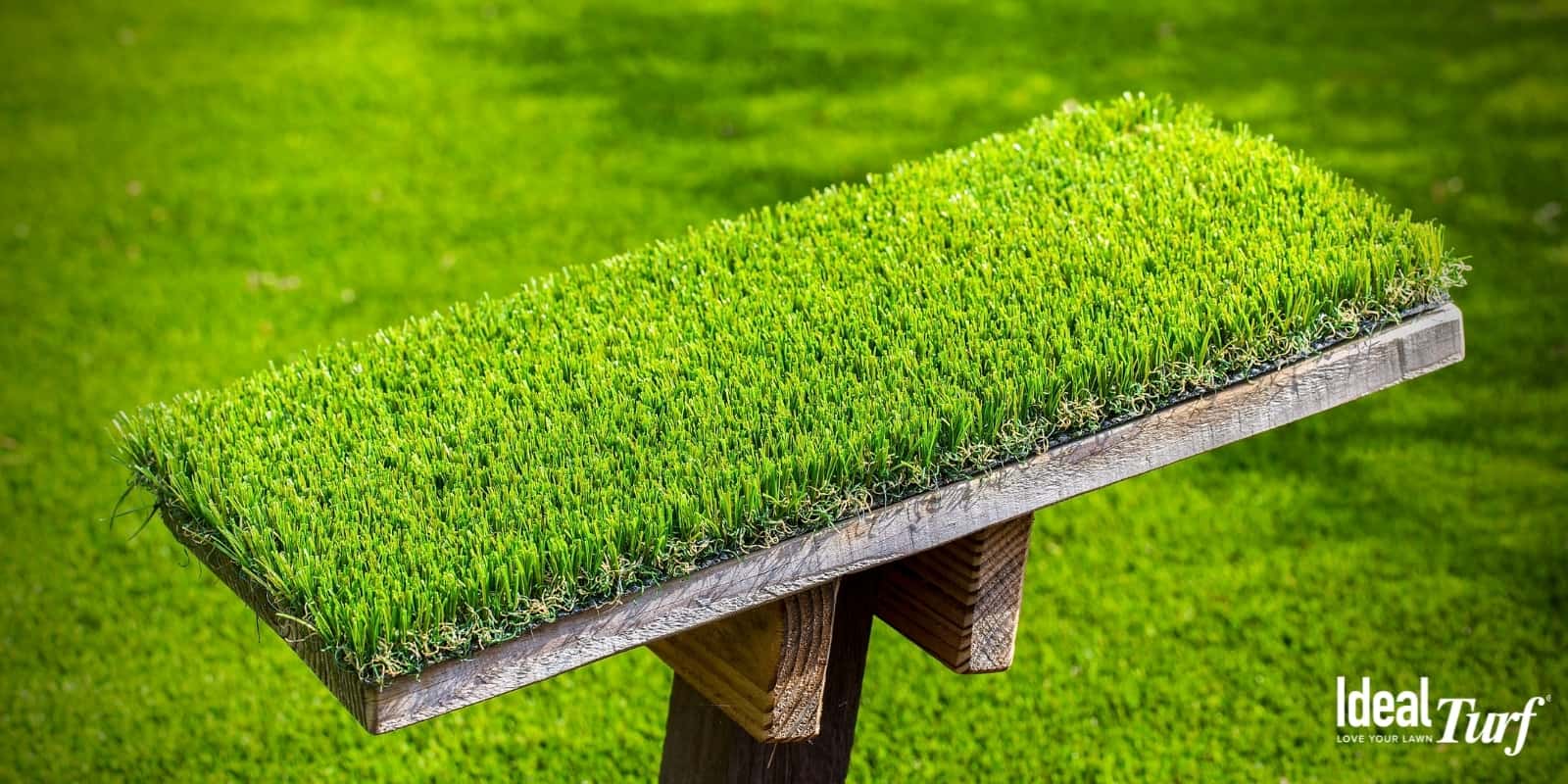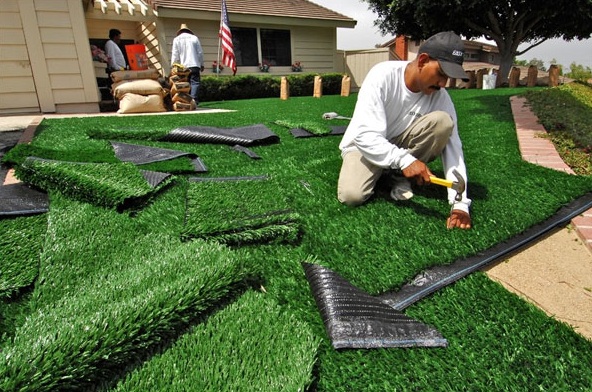Find Trusted Artificial Turf Companies Phoenix for High-Quality and Realistic Grass
Find Trusted Artificial Turf Companies Phoenix for High-Quality and Realistic Grass
Blog Article
Look Into the Environmental Conveniences of Opting for Artificial Lawn Solutions
The fostering of fabricated turf services offers a compelling chance to attend to pushing ecological difficulties. By dramatically reducing water usage and reducing the application of hazardous chemicals, these alternatives not only promote sustainable landscaping however additionally shield neighborhood ecosystems.
Water Preservation Conveniences
Among one of the most substantial benefits of synthetic turf is its ability to conserve water. Traditional lawn yards need considerable irrigation, particularly in areas prone to dry spell or water constraints. On the other hand, synthetic turf does not need watering, considerably reducing the overall demand for water sources. This feature is specifically helpful in deserts where water shortage is a pressing concern.
By getting rid of the requirement for routine watering, artificial grass adds to sustainable landscape practices and helps mitigate the ecological impact of excessive water consumption. The preservation of water expands to the reduction of overflow, which can lead to dirt erosion and river air pollution.
Furthermore, the setup of synthetic grass allows property owners and towns to assign water resources more successfully, concentrating on essential usages such as drinking water and agriculture. The shift in the direction of fabricated grass not just promotes accountable water usage however additionally lines up with wider ecological objectives focused on maintaining all-natural sources.
As communities progressively prioritize sustainability, the water conservation benefits of artificial turf provide an engaging situation for its fostering in commercial and domestic landscaping projects.
Decreased Chemical Use
The change to fabricated lawn significantly decreases the reliance on chemical treatments commonly used in all-natural grass maintenance. Conventional turf management usually entails the application of plant foods, herbicides, and pesticides to promote growth and control pests. These chemicals can position risks to human health and wellness, local wildlife, and the environment, contributing to soil and water contamination.
On the other hand, synthetic grass removes the demand for these dangerous compounds. Once mounted, it needs marginal maintenance, mainly containing normal cleansing and seldom infill replenishment. This reduction in chemical use not just benefits the prompt atmosphere yet additionally contributes to more comprehensive environmental security. By reducing the launch of synthetic substances into the community, synthetic lawn promotes much healthier soil and water systems.
In addition, the absence of chemical overflow connected with synthetic grass installations assists shield neighborhood waterways from contamination, sustaining aquatic life and preserving biodiversity. Arizona artificial turf. As areas increasingly prioritize sustainable practices, selecting synthetic grass offers a viable solution that lines up with ecological preservation objectives. Via this shift, homeowner can take pleasure in lavish eco-friendly spaces without compromising ecological health and wellness, leading the way for a much more lasting future
Reduced Carbon Footprint

In addition, the installment of artificial turf can cause substantial water conservation. Natural yards call for considerable quantities of water for irrigation, which not only includes to the carbon footprint linked with water extraction and treatment but additionally pressures neighborhood water resources. On the other hand, synthetic grass requires minimal upkeep, requiring no watering, therefore substantially decreasing water use and its associated power prices.
Furthermore, the long life of basics synthetic grass contributes to its reduced carbon influence. With a life expectancy of as much as 15 years or more, the requirement for regular substitutes is diminished, leading to less waste and reduced power consumption in manufacturing and disposing of typical lawn alternatives. In general, man-made lawn provides a lasting choice for eco aware landscaping.
Habitat Conservation
Environment preservation is a crucial factor to consider in the argument over landscape design options, particularly when contrasting fabricated turf to natural yard. All-natural grass lawns often call for comprehensive maintenance, consisting of the use of herbicides, fertilizers, and pesticides, which can adversely influence neighborhood ecological communities. These chemicals can seep into the dirt and Continued rivers, damaging native vegetation and animals and interfering with local habitats.
Artificial grass gets rid of the need for unsafe chemicals, consequently safeguarding neighboring wild animals and preserving the integrity of bordering environments. The installment of man-made grass can lead to the conversion of former grass areas into even more biodiverse landscapes, such as pollinator gardens or native plant locations, which can support regional wildlife.
Eventually, the shift to artificial grass not just conserves water and reduces maintenance initiatives however also promotes an extra harmonious partnership in between human tasks and the all-natural environment, advertising habitat conservation while doing so.
Long-Term Sustainability
Long-lasting sustainability is a vital aspect in evaluating the advantages of synthetic grass over standard grass lawns. One of the most considerable advantages of synthetic grass is its durability; it can last approximately 15-20 years with very little upkeep, whereas natural yard needs frequent reseeding and substitute. This durability decreases the need for continuous resources, such as water, plant foods, and pesticides, which are important for keeping a healthy yard lawn.
Furthermore, fabricated turf adds to a reduction in carbon emissions associated with grass treatment equipment. Conventional lawns usually need gas-powered lawn mowers, leaners, and blowers, all of which add to air pollution. Arizona artificial turf. In contrast, synthetic grass gets rid of the demand for such equipment, advertising a cleaner setting
In addition, the manufacturing of artificial grass significantly utilizes recycled products, boosting its sustainability account. As manufacturers embrace environmentally friendly practices, the ecological footprint of synthetic grass continues to decrease.

Final Thought
The adoption of synthetic lawn options offers considerable ecological advantages, consisting of substantial water conservation, minimized reliance on harmful chemicals, and a lower carbon footprint. Synthetic grass help in protecting natural environments by minimizing land disturbance and advertising long-lasting sustainability through the usage of long lasting materials. Jointly, these variables highlight the potential of synthetic grass to add favorably to environmental health and provide a sensible choice to standard landscaping techniques in a progressively resource-conscious world.
In contrast, synthetic grass does not need watering, substantially reducing the total demand for water sources. By decreasing the launch of synthetic substances into the ecosystem, fabricated turf promotes healthier soil and water systems.
Moreover, the setup of artificial grass can result in significant water preservation. In contrast, synthetic grass requires marginal upkeep, calling for no watering, thus dramatically lowering my website water use and its linked power prices.

Report this page